アサザは浅い水辺に自生。今は河川の整備などで衰退しているものの、『万葉集』でも髪飾りとして詠まれ、古くから馴染みのあるお花です。
Fringed Water Lily grows naturally in shallow water. It is now in decline due to river construction, but it is a familiar flower from ancient times, as it is written about as a hair ornament in the oldest collection of Japanese poetry, the Manyoshu.
【仮名】アサザ
【和名】浅沙, 阿佐佐
【英名】Fringed Water Lily, Yellow Floating Heart, Water Fringe
【学名】Nymphoides peltata
【誕生】06/ ??
【開花】05, 06, 07, 08, 09月
【花色】Yellow
アサザ
アサザの概要
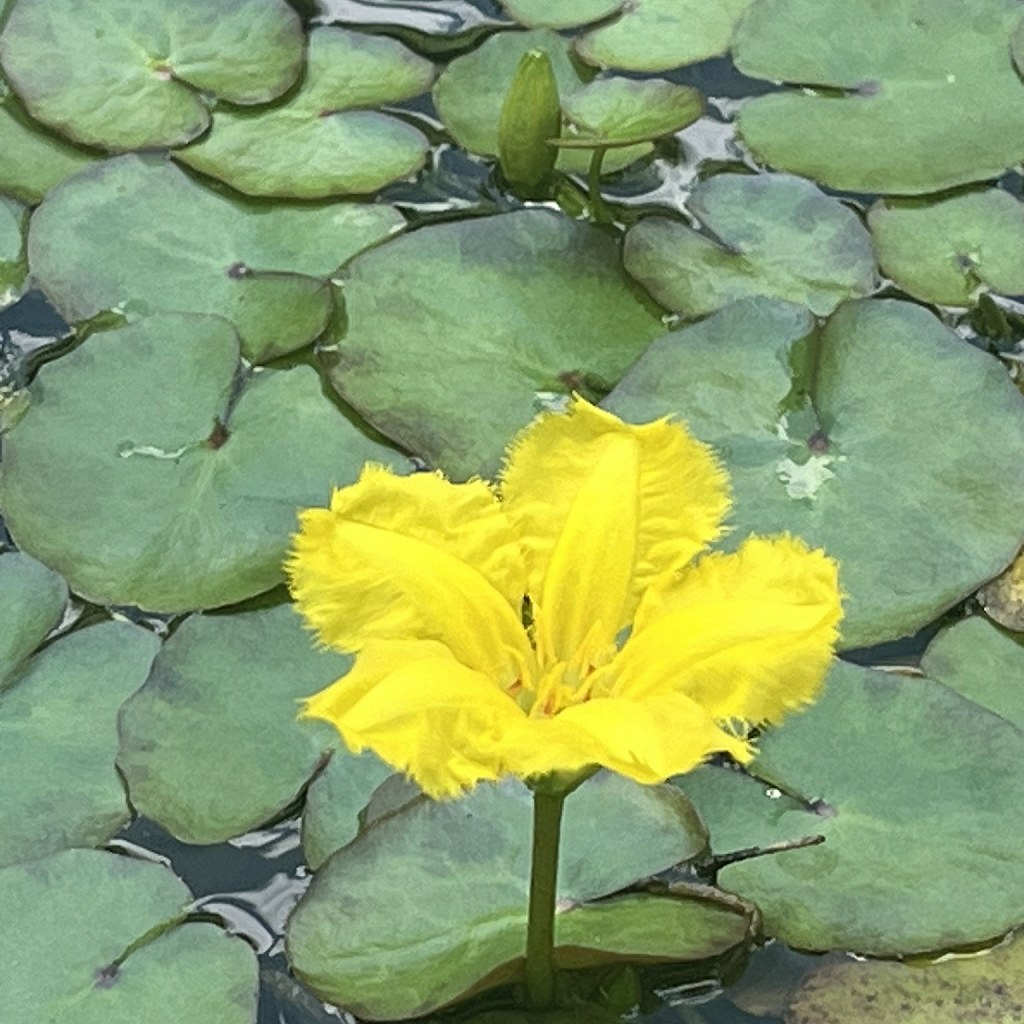
アサザはミツガシワ科の多年草。ユーラシア大陸の温帯域に分布し、北米では侵略的外来種です。日本では北海道から九州まで、湖沼、ため池、水路などの浅い水辺に自生。河川の整備などで衰退しているものの、『万葉集』でも髪飾りとして詠まれ、古くから馴染みのあるお花です。
アサザの名前
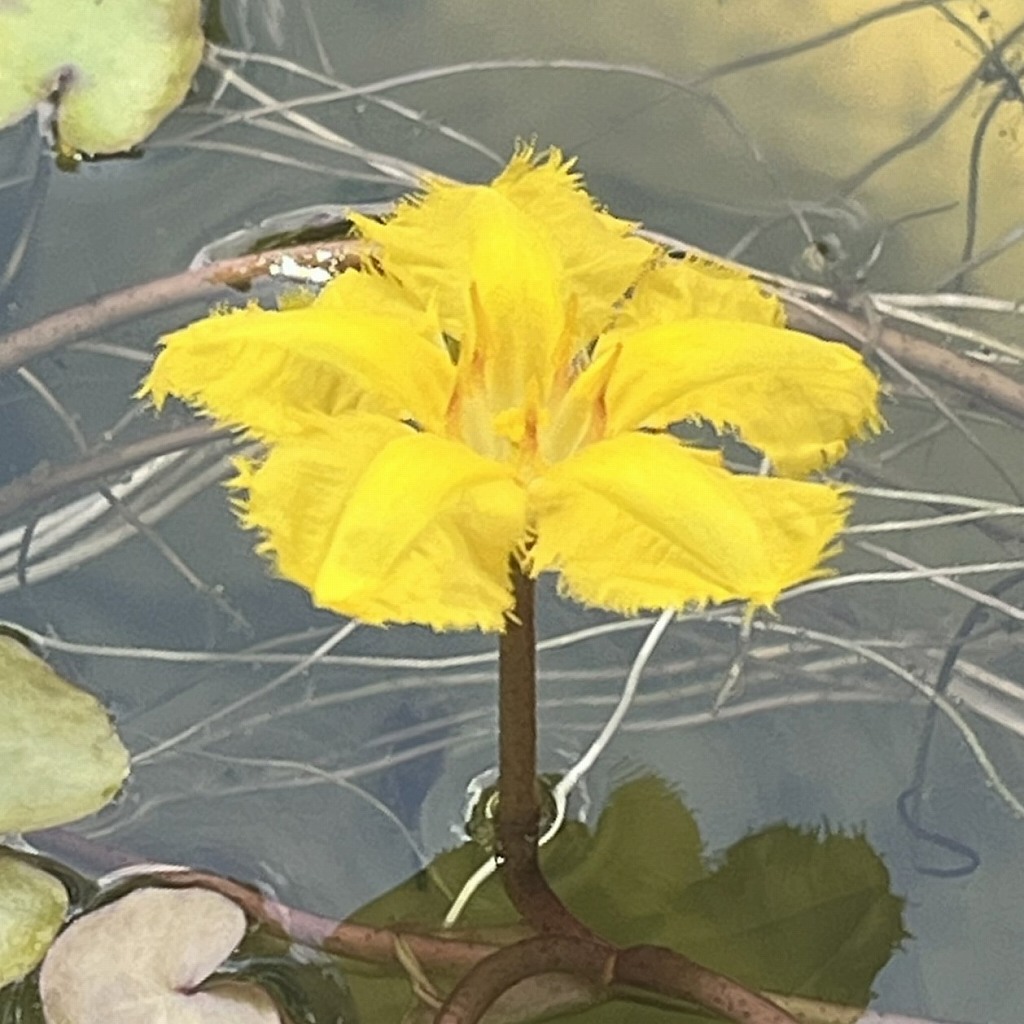
アサザの和名の由来は、浅い水辺で花が咲くから「浅咲」、朝から花が咲くから「朝咲」で、それらが転じて「浅沙」になりました。英名のフリンジは花の縁が縮れているから、ハートは葉が心臓形だから。ラテン語の種小名ペルタタは「楯状の」という意味で、葉の形に由来します。
アサザの姿形
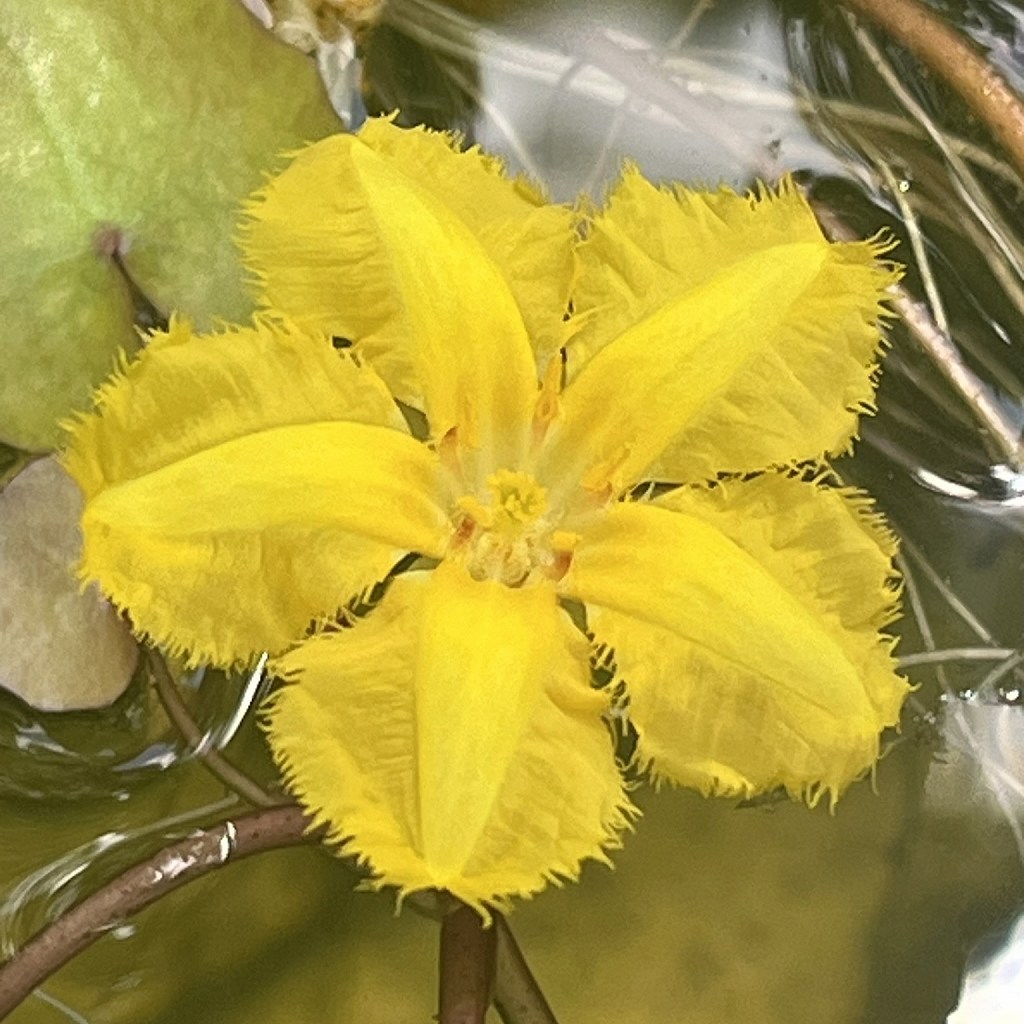
アサザは水底で根茎が這い、節々から髭根を地中に伸ばします。葉は光沢のあるハート形で互生。長い柄を伸ばして水面に浮かびます。花は水上に柄が直立して咲き、花弁が5枚、縁がフリル状。雌しべの長い長花柱花と、雄しべの長い短花柱花があり、その交配で種子が作られます。
アサザの利用
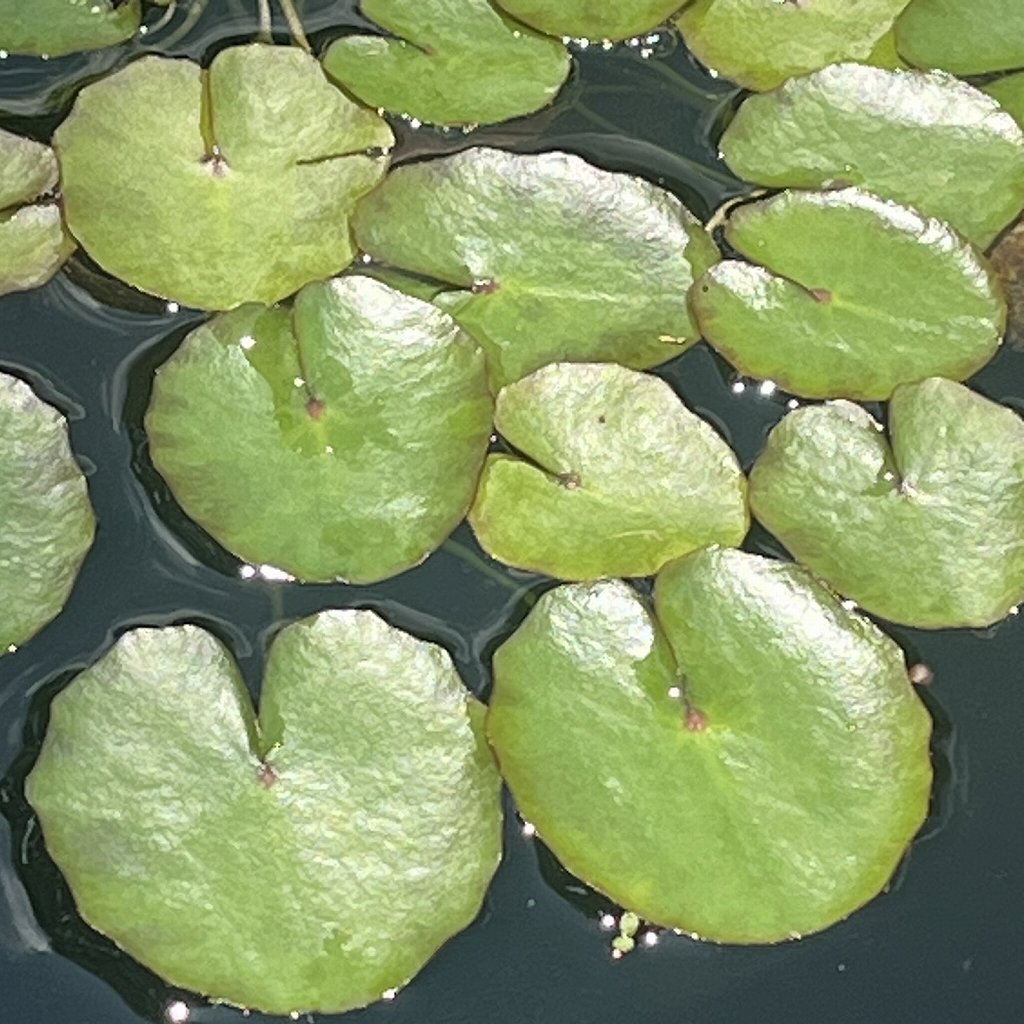
アサザは「犬蓴菜」や「花蓴菜」という別名もあるように食べられます。若葉は独特な苦みがあるものの、茹でて水にさらして、おひたし、和えもの、油炒めに。さらに、ルチンやケルセチンなどのフラボノイドが含まれ、生薬として発熱、腫れもの、頻尿、尿閉などに用いられます。
Fringed Water Lily
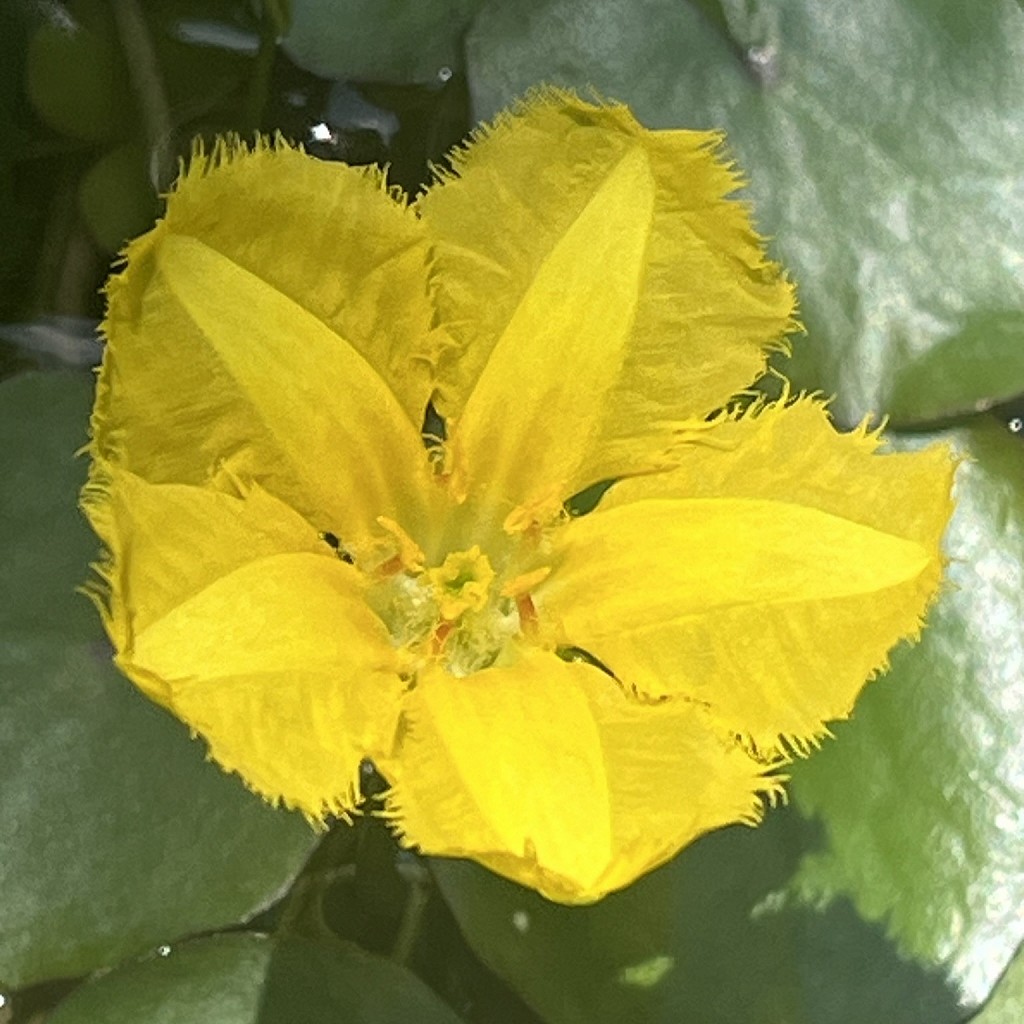
Fringed Water Lily is a perennial plant of the Menyanthaceae family. It is distributed in the temperate zone of the Eurasian continent and is an invasive alien species in North America. In Japan, it grows naturally in shallow water such as lakes, ponds, and waterways from Hokkaido to Kyushu. It is now in decline due to river construction, but it is a familiar flower from ancient times, as it is written about as a hair ornament in the oldest collection of Japanese poetry, the Manyoshu.
The Japanese name of the Fringed Water Lily comes from a word that means “flowers bloom in shallow water” or “flowers bloom in the morning”. The English name includes “Fringe” because the edges of the flower are curled, and “Heart” because the leaves are heart-shaped. The Latin specific name peltata means “shield-like” and is derived from the shape of the leaves.
The Fringed Water Lily has a rhizome that creeps on the bottom of the water and extends roots underground from each node. The leaves are shiny, heart-shaped, and alternate. The leaves extend long stalks and float on the water surface. The flowers bloom on an upright stalk above the water, with five petals and frilly edges. There are long-style flowers with long pistils and short-style flowers with long stamens, and seeds are produced by crossing the two.
The Fringed Water Lily is edible. Although the young leaves have a unique bitter taste, they can be boiled and soaked in water to make a boiled dish, a salad, or a stir-fry. In addition, they contain flavonoids such as rutin and quercetin, and are used as a herbal medicine for fever, swelling, frequent urination, and urinary retention.


